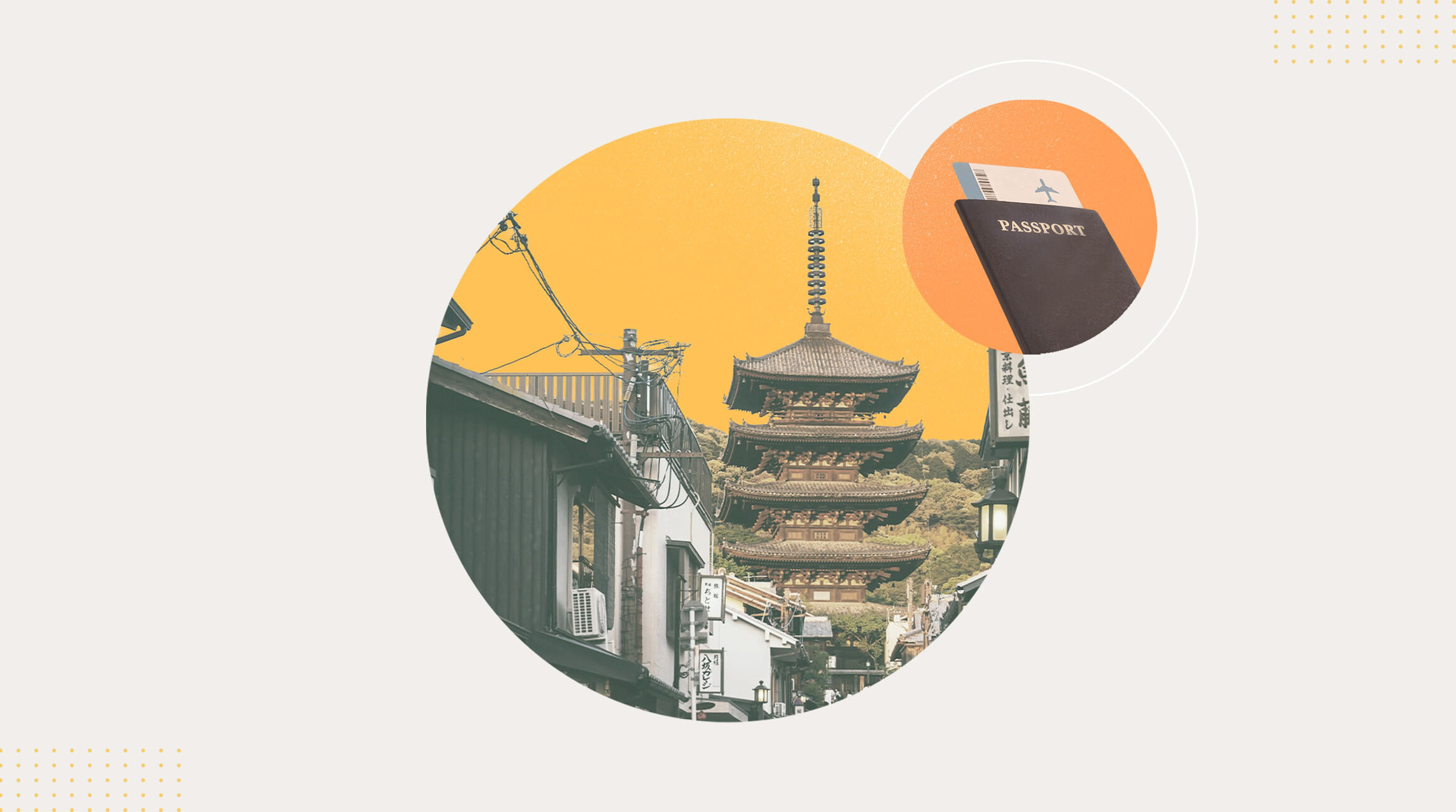
Imagine you’re finally booking that dream trip to Japan, browsing flight options, when you suddenly wonder: do Australians need a visa for Japan?
Good news. No visa is required! Australian passport holders can visit Japan visa-free for up to 90 days for tourism or business.
However, before you celebrate, there are still essential entry requirements, documents, and tips—such as how a reliable eSIM can enhance your trip—to keep in mind.
We’ll guide you through everything you need to know:
- Japan’s visa exemption for Australians
- Required documents
- Permitted stay
- Safety and arrival protocols
- Health declarations
- Five must-try experiences
- Why getting a Japan eSIM should be your first travel move
Consider this your ultimate pre-departure checklist.
Japan's Visa Exemption Policy for Australians
Japan established a visa waiver program for Australians decades ago. Today, it continues to make spontaneous Tokyo adventures entirely possible.
Australian passport holders can enter Japan for tourism, business meetings, or visiting friends and family without obtaining a visa beforehand.
The policy reflects the strong diplomatic relationship between both countries and recognises Australians as low-risk travellers.
This visa-free arrangement is incredibly flexible. You can decide to extend your weekend in Bali into a Japan stopover, book last-minute flights during shoulder season, or pivot your entire Asia trip itinerary without worrying about lengthy visa processing times.
The system works on a simple entry stamp basis, where immigration officers determine your permitted stay duration upon arrival.
Entry Requirements and Required Documents
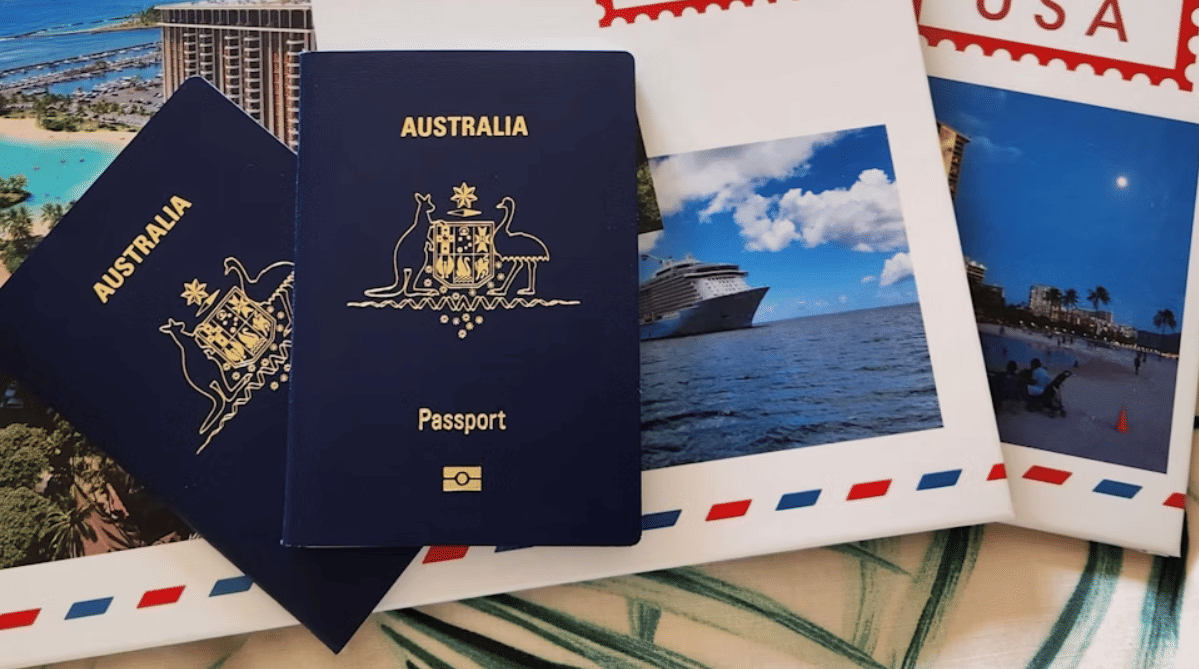 Unsplash
Unsplash
To enter Japan, your Australian passport must be valid for your entire stay and remain valid upon departure.
Unlike some countries, Japan only requires passport validity for the actual length of your visit.
You’ll also need proof of onward travel, like a return ticket or booking to another destination, and evidence of enough funds to support yourself while in Japan.
Essential documents to prepare:
- Valid Australian passport (for entire duration of stay)
- Return flight ticket or onward travel booking
- Proof of accommodation (hotel bookings or host contact details)
- Evidence of sufficient funds (bank statements, credit cards, or cash)
While officers rarely request financial documentation, having proof readily available shows you're a prepared, responsible traveler.
Duration of Stay
Australian passport holders can stay in Japan visa-free for up to 90 days for tourism, business, or visiting friends and family.
Immigration officers typically grant the whole 90-day period to most Australian visitors. Here are some things you need to know:
- Your 90-day period begins upon entry
- This timeframe is non-extendable under normal circumstances
- You can visit Japan multiple times throughout the year using the visa exemption scheme
- Each trip grants you a fresh 90-day period
Arrival Card
Japan has streamlined the arrival process, but you’ll still need to fill out an arrival card at immigration.
These cards (available in English) ask for your stay length, accommodation, purpose, and contact details.
Complete the card clearly during your flight or in the immigration queue.
At the counter, officers will ask simple questions, stamp your passport, and welcome you to Japan.
Keep the arrival card stub with your passport. You’ll need it to leave the country.
Losing it can complicate and delay your departure.
Health Declaration
Post-pandemic travel has brought new health screening measures that continue to evolve. Currently, Australia has no special vaccination requirements for standard trips to Japan.
However, you may be asked to fill out health declaration forms on your flight or upon arrival, especially during flu season or global health alerts. These forms ask about symptoms, recent illness exposure, and countries visited.
Always answer honestly. If you feel unwell on arrival, notify health staff immediately; Japan’s healthcare is excellent, and early action helps protect everyone.
Alternatively, register as a tourist on Visit Japan Web
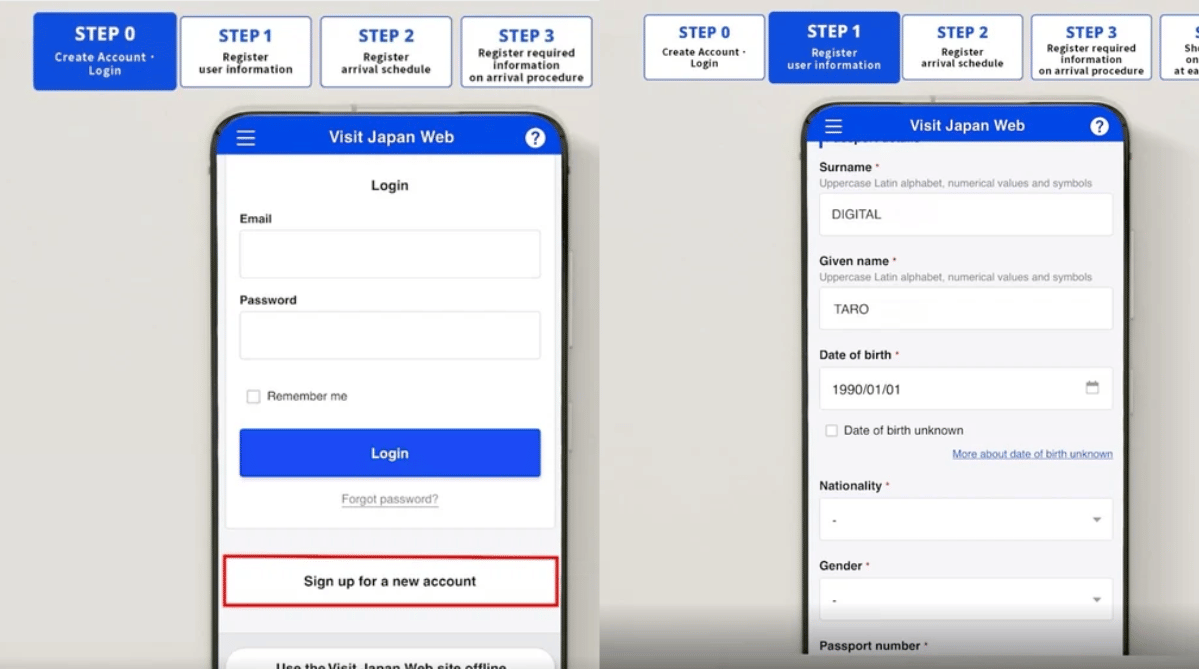 Visit Japan Web
Visit Japan Web
Visit Japan Web is a website that replaces the MySOS app, allowing travellers to pre-register required documents, immigration, and customs forms before entering Japan.
Once you enter your information, you’ll receive a QR code to show at the airport. Pre-registering before your flight saves time and avoids hassle on arrival.
And no, you don't need to fill out the paper arrival card if you have already registered on Visit Japan Web and received a QR code.
Here are the steps:
Create your Visit Japan Web account
- Sign up with email and password, then fill out your personal and passport details
- Optionally add information for accompanying family members
Register your planned trip
- Enter arrival date, airline, flight number, and intended address in Japan
- Include any family members traveling with you if applicable
Complete arrival procedure info
- Upload a scan or photo of your passport’s information page
- Fill out the online health and customs questionnaire (the quarantine/fast‑track form)
- Upload any required vaccination info, if requested
Obtain your QR code
- Once approved, the portal screen turns blue and displays your QR code
- Save or screenshot this QR code to show upon arrival in Japan
Ports of Entry for Australian Travelers
Major International Airports
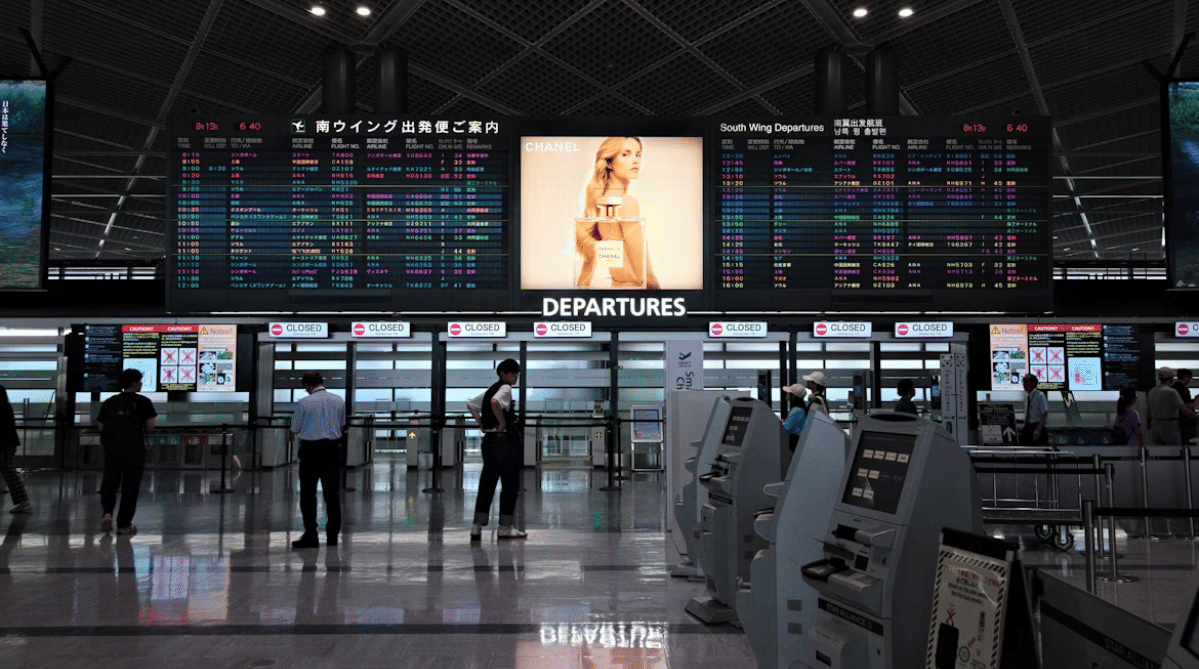 Unsplash
Unsplash
Japan welcomes Australian visitors through several major international gateways, and each has its advantages depending on your travel plans:
- Narita International Airport
- Haneda Airport
- Kansai International Airport
- Chubu Centrair International Airport
These primary entry points provide excellent facilities and transportation connections throughout Japan.
Narita serves as Tokyo's main international hub with direct transportation links to central Tokyo, while Haneda offers closer proximity to the city center.
Kansai provides access to western Japan's cultural treasures, including Kyoto and Osaka, and Chubu Centrair in Nagoya positions you perfectly for exploring central Japan's mountain regions and traditional towns.
Regional and Secondary Airports
Japan's secondary airports create opportunities for more intimate arrival experiences while connecting you directly to specific regions:
- New Chitose Airport (Sapporo)
- Fukuoka Airport
- Sendai Airport
- Hiroshima Airport
These regional gateways usually have shorter immigration queues and fewer crowds, making arrivals smoother and more relaxed.
They’re ideal for travellers with regional interests or those wanting to skip Tokyo’s busy scene.
New Chitose is perfect for Hokkaido’s winter sports and seafood, while Fukuoka is your entry point to Kyushu’s hot springs and volcanic landscapes.
What to Expect at Japanese Immigration
Australia's strong diplomatic relationship with Japan translates into generally smooth immigration experiences for Australian passport holders.
Here’s what you can expect:
- Officers process most Australian visitors quickly
- Expect standard questions about your trip and where you’ll stay
- All visitors (except those under 16 and diplomats) are fingerprinted and photographed
- This process is routine and usually takes 10–15 minutes, even at busy times
- Your passport will be stamped and entry documents provided
- Immigration staff are professional and respectful, especially if you have all your documents ready
Safety and Security
Japan consistently ranks among the world's safest countries, making it an ideal destination for solo travellers, families, and first-time visitors to Asia.
Crime rates remain remarkably low, and violent incidents involving tourists are infrequent.
You can walk Tokyo's streets at midnight, leave your laptop unattended in a café, or ask strangers for directions without concern for personal safety. However, Japan faces natural disaster risks that require awareness and preparation.
Earthquakes occur regularly, though most are minor tremors barely noticeable to visitors. Typhoon season runs from May through October, potentially disrupting travel plans with flight cancellations and transportation delays.
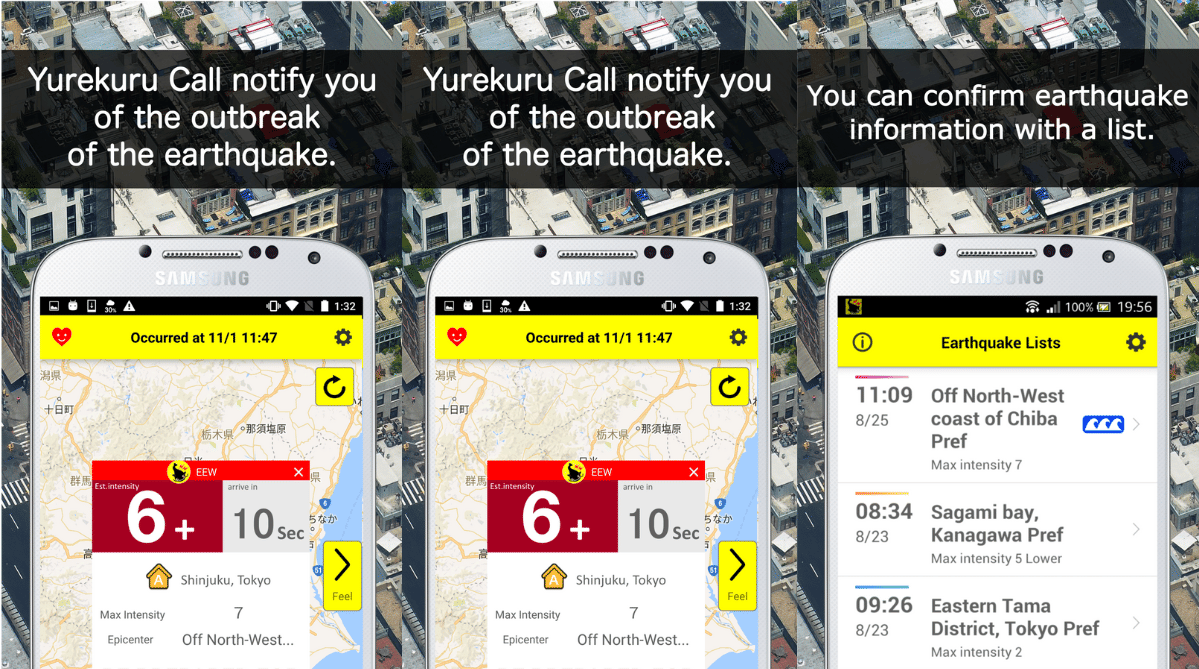 Apps like Yurekuru Call provide early earthquake warnings and other helpful information. Google Play
Apps like Yurekuru Call provide early earthquake warnings and other helpful information. Google Play
Downloading earthquake alert apps and monitoring weather forecasts becomes essential, especially during peak typhoon months from July to September.
The Japan Meteorological Agency provides excellent English-language updates, and your accommodation staff can offer guidance on emergency procedures.
What Australians Can Do in Japan
Bask in the Warmth of Okinawa’s Beaches
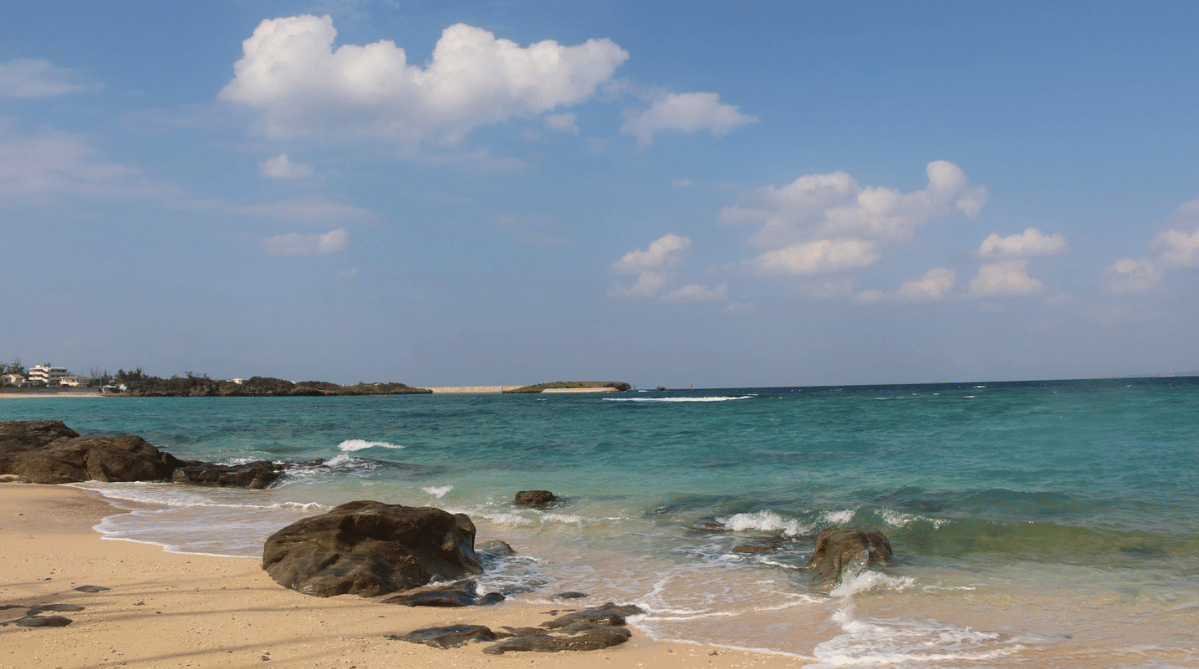
Okinawa is Japan’s tropical escape, making it a perfect getaway from Australia’s winter chill.
Famous for its pristine beaches, turquoise waters, and laid-back island lifestyle, it’s the ideal place to swap jumpers for swimsuits.
Emerald Beach’s soft white sand is perfect for lazy afternoons, while Kabira Bay’s crystal-clear shallows are best explored on a glass-bottom boat ride.
Offshore, the Kerama Islands boast vibrant coral reefs teeming with marine life, drawing snorkelers and divers from around the world. Beyond the shore, lush forests and hidden waterfalls offer nature trails for those seeking a change of pace from the beach.
- Location/Address: Okinawa Prefecture, Japan’s southernmost islands
- Price Range: Many beaches are free to access; water sports and tours from $20–$80
- Best For: Beach lovers, nature enthusiasts, and travellers wanting to escape the Australian winter for a tropical island retreat
Explore Tokyo's Neighbourhoods
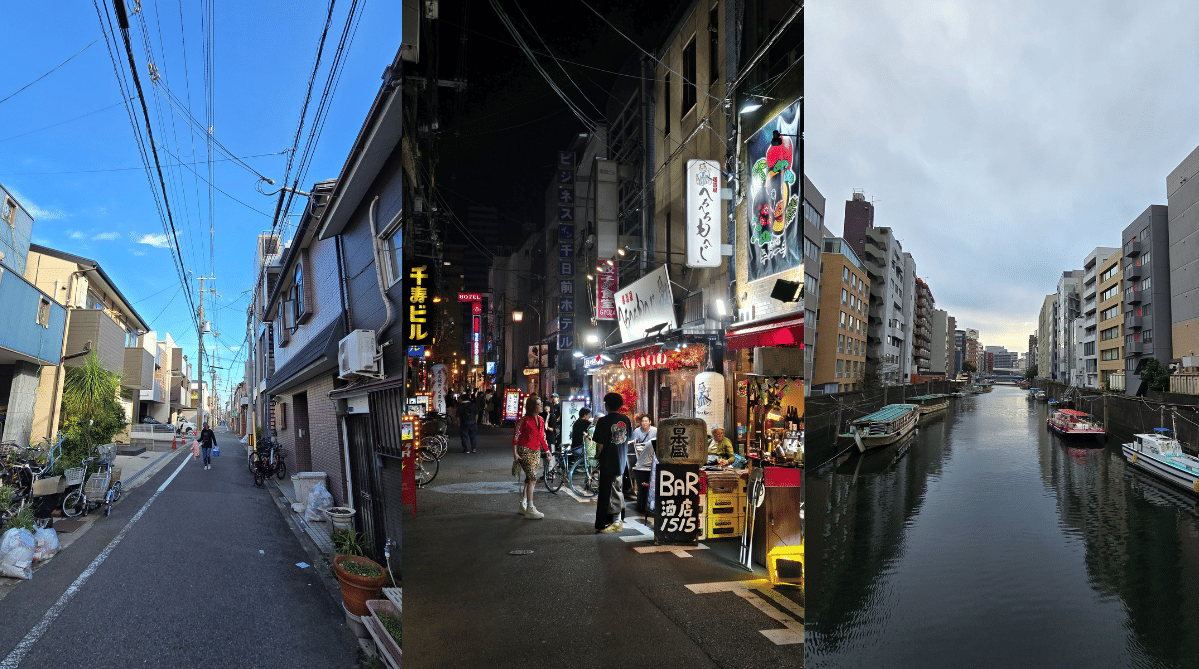
Tokyo isn't just a city, it's a collection of distinct neighbourhoods, each with unique personalities and experiences.
Shibuya pulses with youth culture and neon energy, while Asakusa preserves traditional charm through ancient temples and artisan shops.
Harajuku showcases Japan's most creative fashion expressions, and Ginza delivers luxury shopping and world-class dining experiences.
- Location/Address: Various districts throughout the Tokyo Metropolitan Area
- Price Range: $0-$500+ per day, depending on activities and dining choices
- Best For: First-time visitors wanting diverse cultural experiences
Experience Traditional Ryokan Hospitality
Ryokan stays offer authentic Japanese hospitality that transforms accommodation into cultural immersion. These traditional inns feature tatami mat rooms, communal hot spring baths, and elaborate kaiseki dinner presentations. Staff anticipate your needs before you realise them, creating an atmosphere of refined comfort that defines Japanese omotenashi service philosophy.
- Location/Address: Available throughout Japan, particularly in Hakone, Kyoto, and hot spring regions
- Price Range: $200-$800+ per person per night, including meals
- Best For: Travellers seeking authentic cultural experiences and relaxation
Ride the Shinkansen Bullet Train
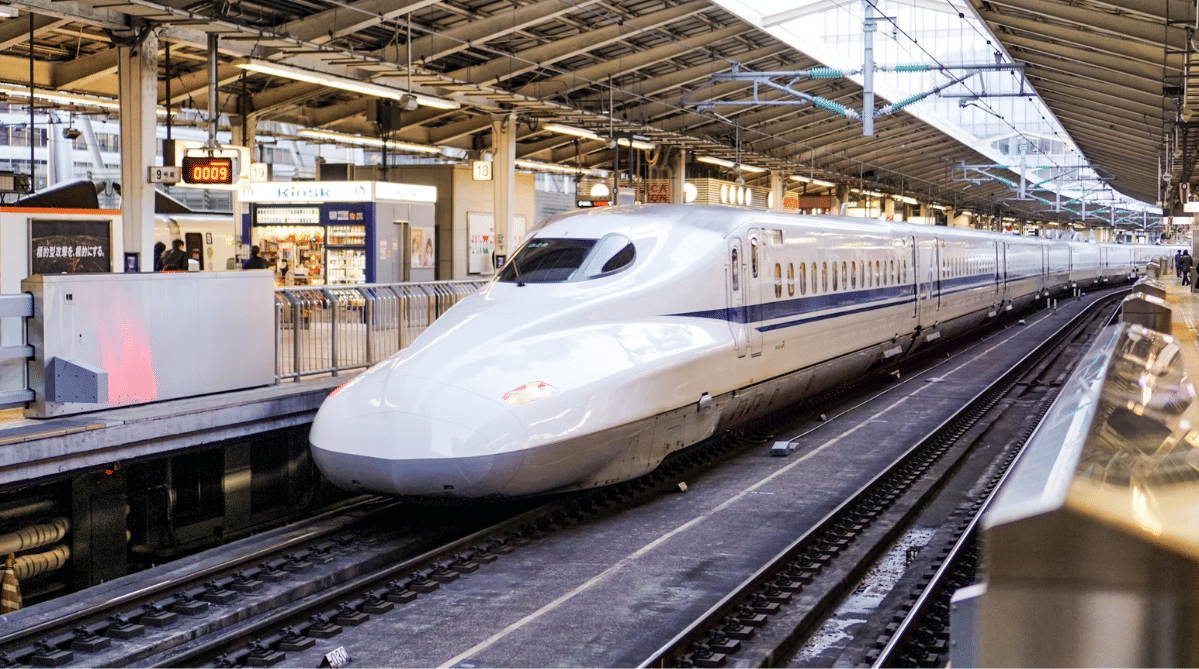 Unsplash
Unsplash
The Shinkansen represents Japanese engineering excellence and efficiency, connecting major cities at speeds reaching 320 kilometres per hour. Beyond mere transportation, riding the bullet train becomes an experience in itself. Watching Mount Fuji blur past your window while enjoying perfectly prepared bento boxes creates unforgettable memories.
- Location/Address: Major routes connecting Tokyo, Osaka, Kyoto, Hiroshima, and other cities
- Price Range: $120-$300+ per journey, depending on distance and seat class
- Best For: Travellers wanting efficient city-to-city transport with scenic views
Discover Kyoto's Temple Heritage
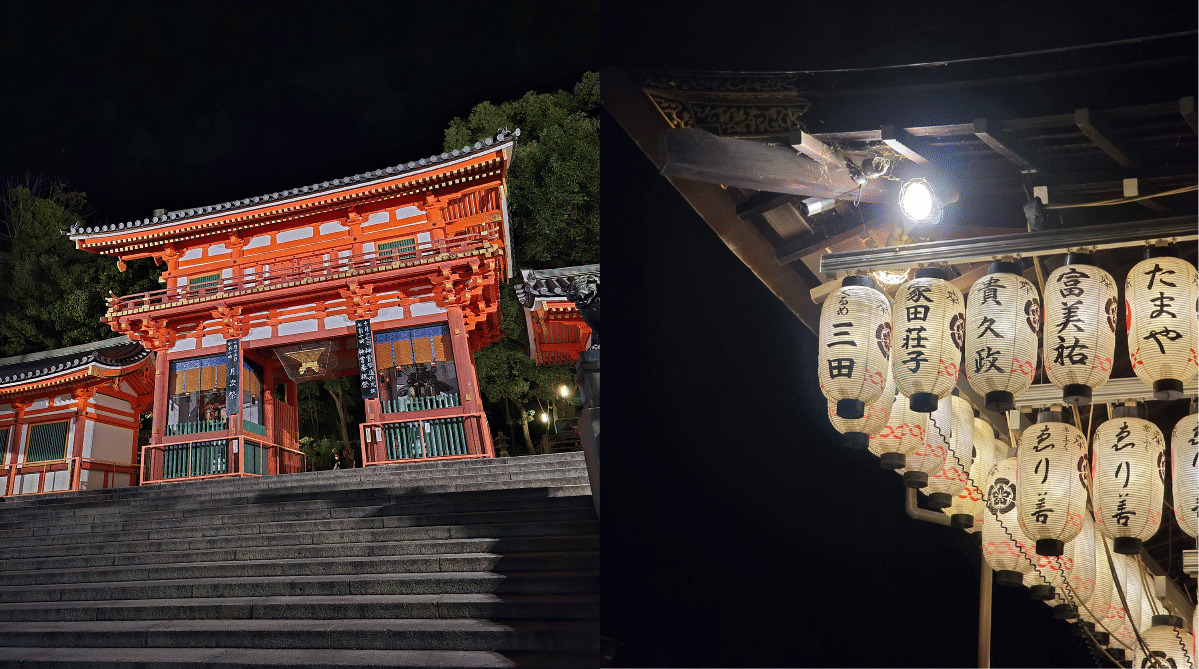
Kyoto houses over 2,000 temples and shrines, each telling stories of Japan's spiritual and architectural evolution.
Fushimi Inari's thousands of vermilion torii gates create mystical mountain pathways, while Kinkaku-ji's golden pavilion reflects perfectly in surrounding pond waters.
Temple-hopping reveals Japan's religious diversity and artistic achievements across centuries.
- Location/Address: Throughout Kyoto Prefecture, concentrated in eastern districts
- Price Range: $5-$15 entrance fees per temple, free for many shrines
- Best For: History enthusiasts and photographers seeking cultural depth
Indulge in Regional Food Specialties
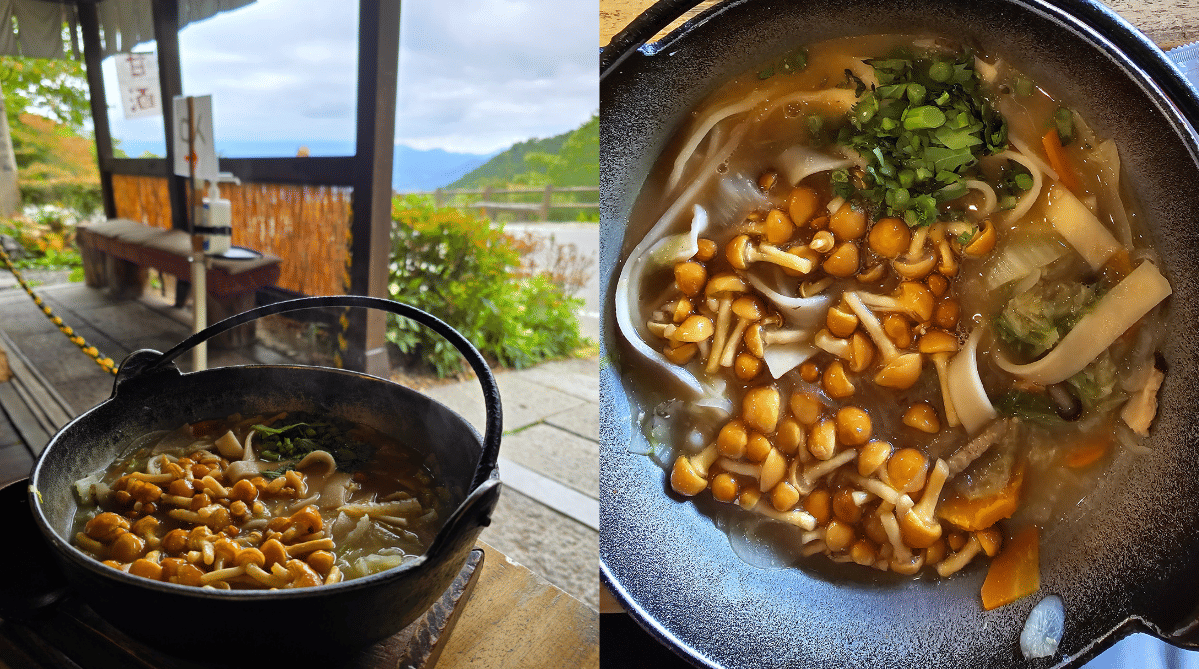 A piping hot bowl of Hōtō I had at Tenka Chaya (天下茶屋), a small local eatery on a hill in Fujikawaguchiko
A piping hot bowl of Hōtō I had at Tenka Chaya (天下茶屋), a small local eatery on a hill in Fujikawaguchiko
Japanese cuisine extends far beyond sushi and ramen, with each region developing distinctive specialties using local ingredients and cooking techniques.
Osaka's street food culture produces takoyaki and okonomiyaki, while Hiroshima perfects its unique okonomiyaki style. Hokkaido has world-class seafood and dairy products, and Okinawa blends Japanese and Southeast Asian culinary influences.
- Location/Address: Regional specialties available throughout respective prefectures
- Price Range: $5-$100+ per meal, depending on restaurant type and location
- Best For: Food lovers wanting authentic regional experiences beyond tourist favourites
Tips for Planning Your Japan Adventure
Staying Connected with Japan eSIMs
Staying connected in Japan requires choosing between several options: pocket WiFi rentals, physical SIM cards, international roaming, or eSIMs.
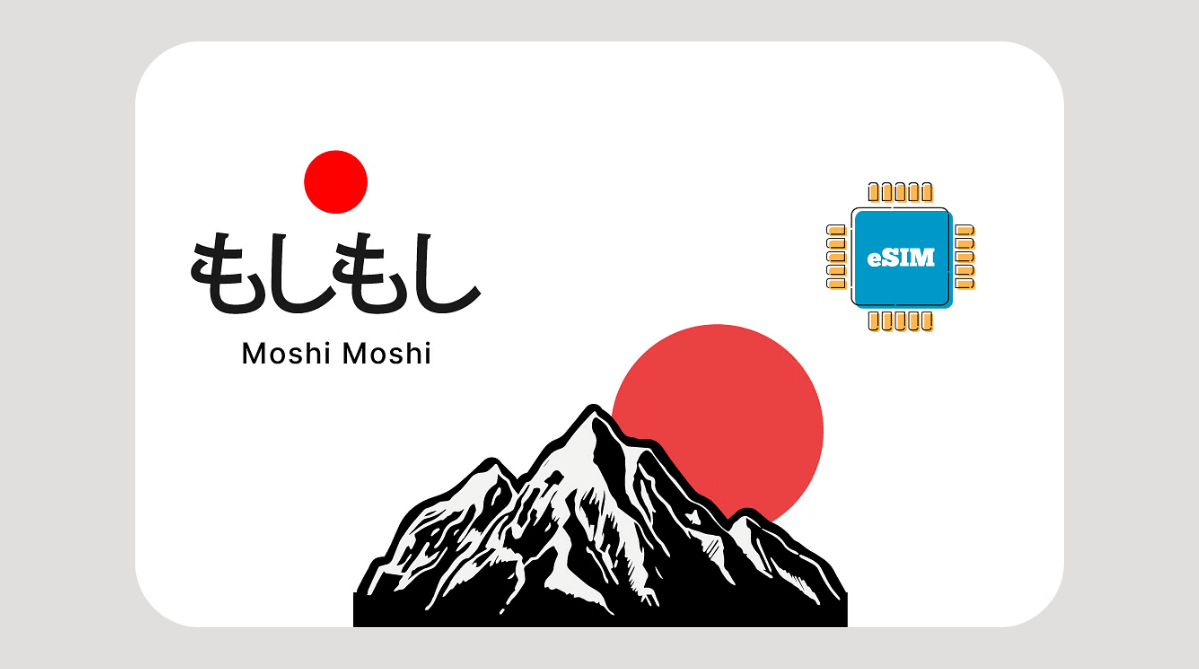
While traditional SIM cards work well, they require physical swapping and potential loss of your original Australian SIM.
Here’s why a Japan eSIM is your best bet:
- Saves you money at ~ $0.87 for 20 GB of data per day
- Instant activation upon landing, no rental counters, and no waiting
- Reliable network coverage across urban and rural Japan
- Cost-effective compared to international roaming charges
- Multiple device compatibility for phones, tablets, and smartwatches
- 24/7 customer support in English for technical assistance
- Flexible data plans matching your travel duration and usage needs
Currency and Payment Methods
Japan operates as a surprisingly cash-heavy society despite its reputation for technological advancement.
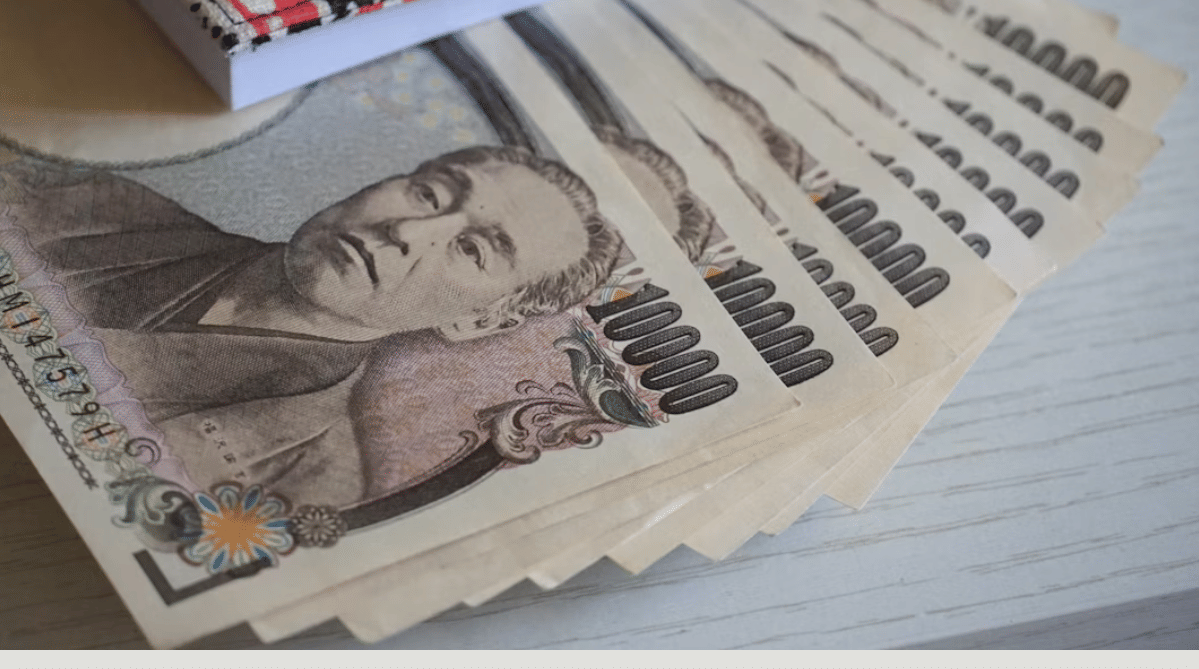 Unsplash
Unsplash
While major hotels, department stores, and tourist attractions accept credit cards, countless restaurants, shops, and traditional establishments still prefer cash transactions.
ATMs at 7-Eleven convenience stores and post offices reliably accept international cards, making cash withdrawal convenient throughout your stay.
The Japanese yen comes in both coin and bill denominations, with coins playing a larger role in daily transactions than in many Western countries.
Travelers often carry a coin purse since vending machines (which are everywhere) primarily accept coins for drinks, snacks, and even hot meals.
Transportation and Getting Around
Japan's transportation system represents efficiency and punctuality at its finest, though navigating it initially requires some preparation.
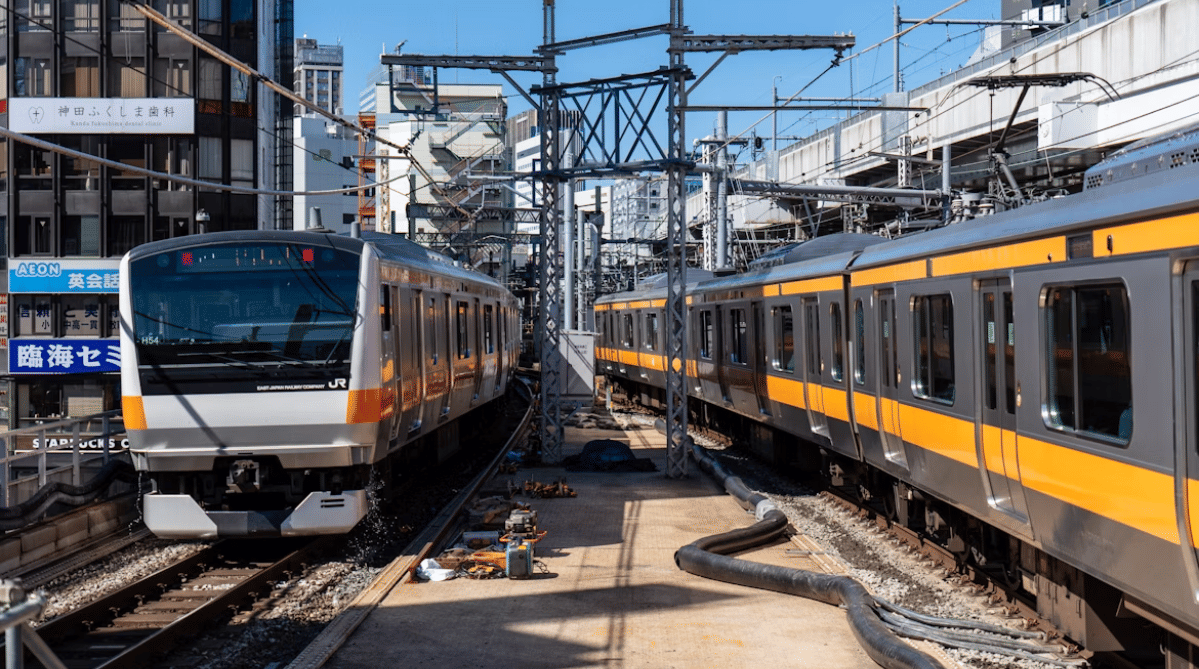 Unsplash
Unsplash
The JR Pass offers unlimited travel on most Japan Railways trains, including most Shinkansen lines, making it cost-effective for multi-city itineraries.
Local city transportation relies heavily on subway and train networks that connect virtually every neighbourhood and attraction.
Google Maps works exceptionally well for navigation in Japan, providing real-time train schedules, platform numbers, and walking directions between stations.
Download offline maps before arrival, though cellular connectivity makes this less critical than in other destinations.
Cultural Etiquette and Social Norms
Japanese society values harmony, respect, and consideration for others, creating cultural expectations that enhance everyone's experience when followed.
Bowing serves as both a greeting and an expression of gratitude, though a simple nod suffices for foreign visitors.
Public transportation etiquette includes offering priority seats to elderly passengers, keeping phone conversations quiet, and removing backpacks in crowded trains.
Restaurant etiquette differs from Western norms. Tipping isn't expected and can cause confusion or offence. Instead, express appreciation through phrases like "gochisousama deshita" after meals, and handle chopsticks respectfully by never sticking them upright in rice bowls.
Stay Connected with Your Japan eSIM Adventure
Now that Australians can visit Japan visa-free for up to 90 days, it’s time to prepare for a smooth arrival.
With Airalo’s Japan eSIM, you can access Google Maps and translation apps the moment you land, no need for pocket WiFi pickups or costly roaming plans. Instant connectivity means you’re ready to explore right away.
Don't let connectivity issues dim your adventure. Staying connected ensures every moment becomes shareable, every direction becomes findable, and every experience becomes unforgettable.




